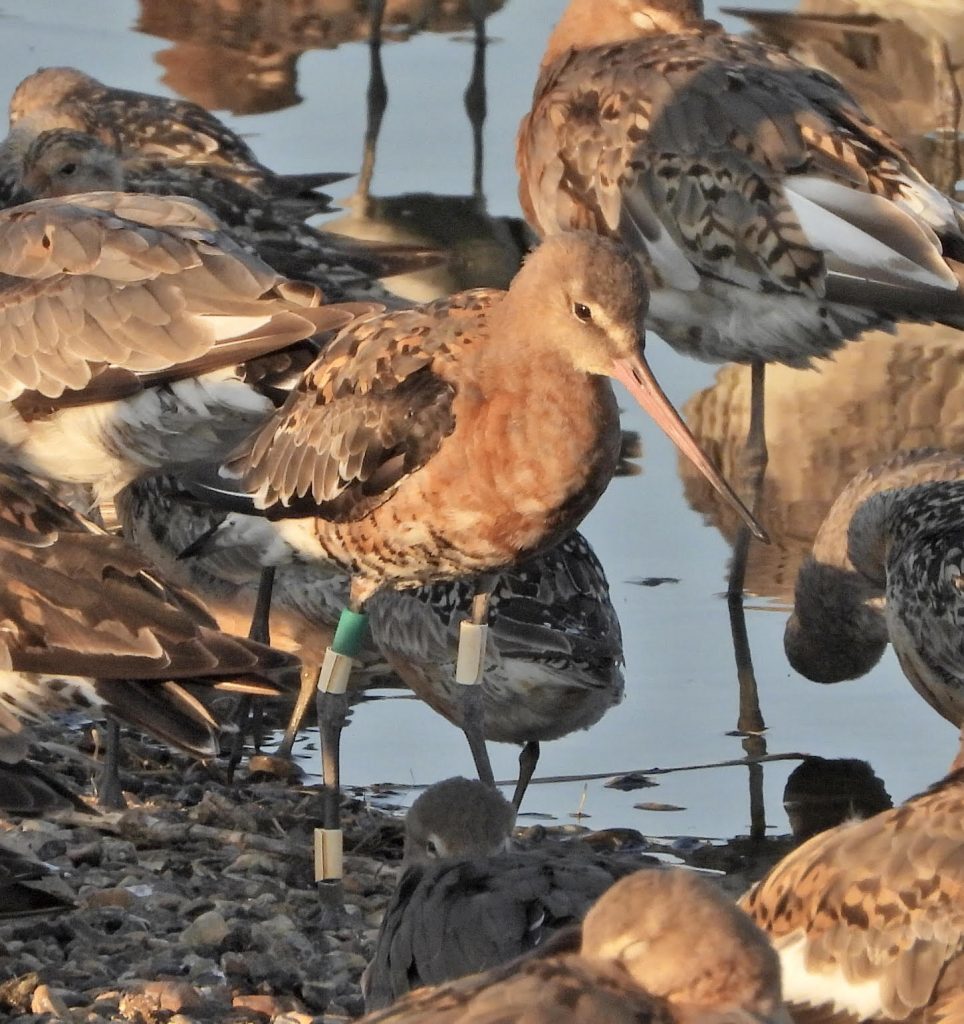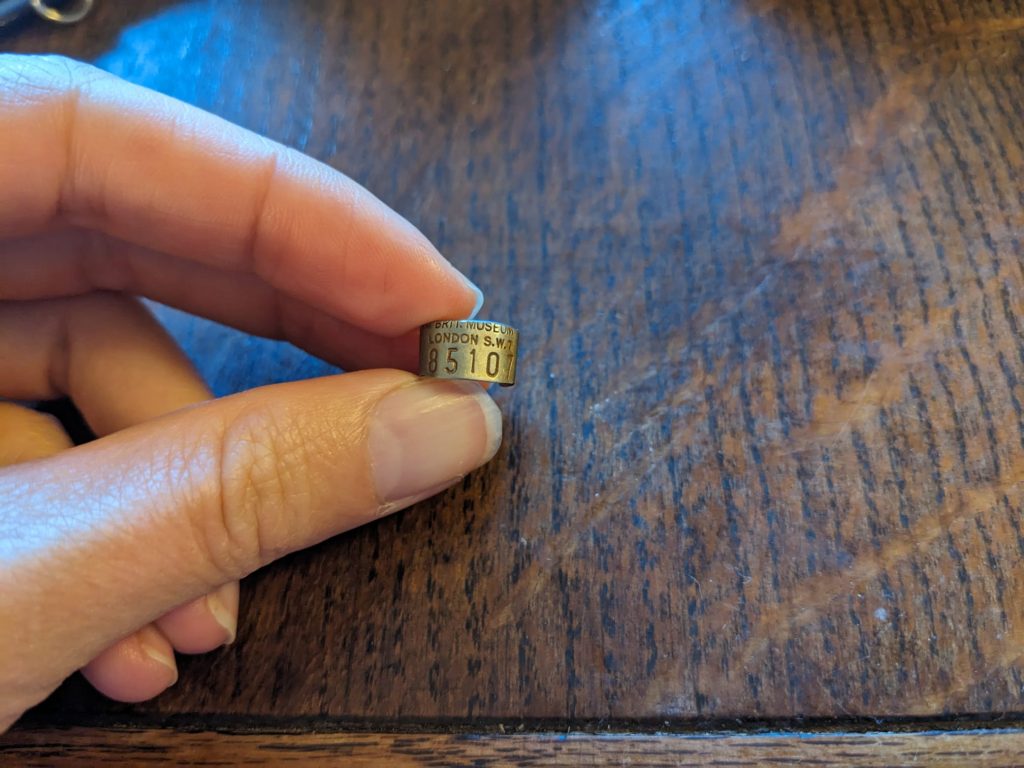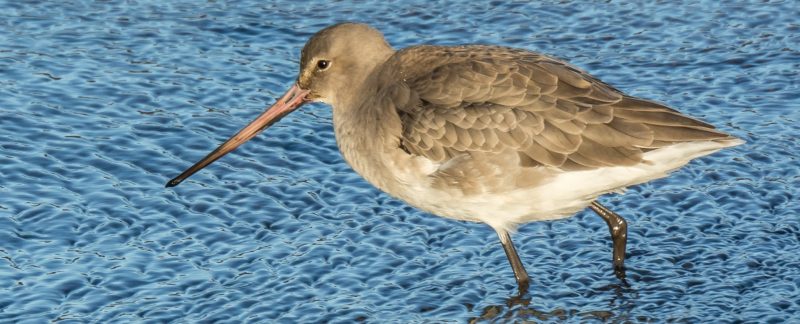On the evening of 8 November 2025, WWRG caught 20 Black-tailed Godwits while mist netting at Terrington. One of them was a very special, colour-ringed bird that sets the BTO longevity record every time it is seen.
Metal ring EP85107 was added to a juvenile Black-tailed Godwit on 30 August 1996, in a cannon-net catch at Holbeach, Lincolnshire. It was the first godwit to arrive at the processing team and Jenny Gill added a set of white and green colour rings, turning it into W-GW/W. Jenny was just starting a post-doctoral project at the University of East Anglia to investigate how the expanding population of godwits was spreading into new sites, and needed to be able to recognise individuals. Over sixty birds were colour ringed on that day. Subsequently, there were winter sightings from Ireland, France and Portugal but many of these colour-ringed individuals were found on the estuaries of East and South England, which is where Jenny’s field studies were to be based.
Over the next 29 years, W-GW/W has been reported 91 times. Having moulted on The Wash, he tends to stay on The Wash in the autumn months, with lots of reports from RSPB Snettisham. The large number of sightings here may say more about the distribution of birdwatchers than it does about his movements! The photo below was taken at Snettisham by Cathy Ryden.

As winter rains fill up the flood plain of the Ouse Washes, many WWRG Black-tailed Godwits move inland to feed on wet grassland, travelling up and down the line of the washes, according to the water levels. W-GW/W can be seen at places such as Fen Drayton and Welney but he has also been seen on the Nene Washes, especially when water levels become very high.
In 2000, we discovered that W-GW/W breeds in North Iceland, and he has been seen in southeast Iceland in spring. He was reported in Cleveland in July one year, presumably having just arrived in a migratory flock but on his way to The Wash. He might be an old bird but you would not know it to look at him. The same cannot be said about his ring; 29 years of mud and salty water had thinned it somewhat, as you can see from the photograph. The mist-netting team gave him a new metal identity and changed the lowest colour ring, which was very stained. I wonder for how long he will wear his new rings?

Very few Black-tailed Godwits had been ringed prior to 1993, when colour ringing started, and it is not surprising that the longevity record is being broken by a colour-ringed individual. For comparison, the BTO records for Bar-tailed Godwit and Curlew are just under 34 years and 32 years and 7 months. Longevity is defined as the time between ringing and the latest report of an individual. The BTO and WWRG record for Oystercatcher is over 45 years. There’s a WaderTales blog about longevity and survival rates. This is updated when the BTO Ringing Report is published so the new record set by W-GW/W will not appear until the autumn of 2026.
There are several WaderTales blogs about Black-tailed Godwits – coincidentally “29 and counting”. If you want to know why godwit numbers have increased, why spring migration is getting earlier and to learn about the role of juveniles in establishing new migration patterns, check out https://wadertales.wordpress.com/about/.
Thanks to Graham Appleton for writing this blog. Header image by Ruth Walker.

